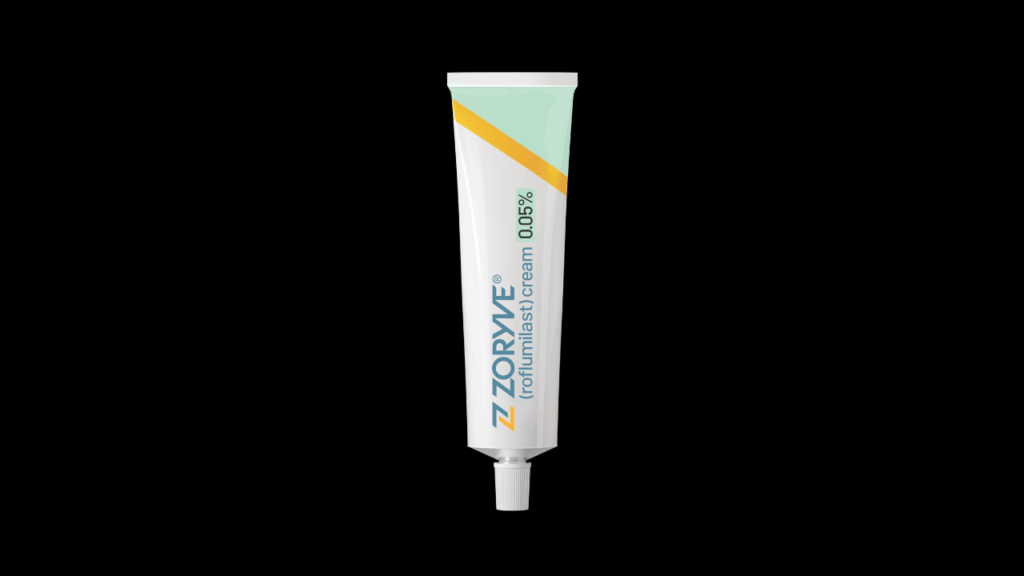The U.S. Food and Drug Administration (FDA) has approved the supplemental new drug application (sNDA) for roflumilast cream 0.05% (Zoryve, Arcutis) for the topical treatment of mild-to-moderate atopic dermatitis (AD) in children aged 2 to 5.
Arcutis intends to make roflumilast cream 0.05% widely available via key wholesaler and pharmacy channels as a new treatment option by the end of October 2025.
The FDA approval of roflumilast cream 0.05% is based on results from the INTEGUMENT-PED Phase 3 trial (INterventional Trial EvaluatinG roflUMilast cream for the treatmENt of aTopic dermatitis), the INTEGUMENT-OLE long-term extension study, and a Phase 1 pharmacokinetic study. In clinical trials, roflumilast cream demonstrated rapid clearance of atopic dermatitis, with positive results across all efficacy endpoints, and was safe and well-tolerated.
INTEGUMENT-PED was a randomized, double-blind, vehicle-controlled, parallel-group study, that evaluated roflumilast cream or vehicle once-daily for four weeks in 652 children aged 2 to 5 (n=437 treated with roflumilast cream, n=215 vehicle). INTEGUMENT-OLE was a Phase 3, multicenter, open-label extension study of the long-term safety and efficacy of roflumilast cream 0.15% in adults and children aged 6 and older with AD and roflumilast cream 0.05% in children ages 2 to 5 years with AD. A total of 658 children and adults from INTEGUMENT-1 and -2 and 562 children from INTEGUMENT-PED enrolled in the INTEGUMENT-OLE study.
In the INTEGUMENT-PED trial, roflumilast cream demonstrated rapid disease clearance, with data showing significant improvements as early as Week 1. At Week 4, 25.4% of children treated with roflumilast cream 0.05% achieved vIGA-AD Success, defined as a validated Investigator’s Global Assessment—Atopic Dermatitis (vIGA-AD) score of “Clear” or “Almost Clear,” plus a two-grade improvement from baseline, compared to 10.7% of children treated with vehicle.
The study also met all pre-determined secondary endpoints, with improvements seen across all time points, including vIGA-AD of “Clear” and “Almost Clear” at Week 1. Additionally, 39.4% of children using roflumilast cream achieved a 75% reduction in Eczema Area and Severity Index (EASI-75) at Week 4 compared to 20% using vehicle, with differences observed as early as Week 1 (exploratory endpoint).
Roflumilast cream was also shown to reduce itch at Week 4, with some caregivers reporting less itching within 24 hours after first application. In an exploratory analysis, over one-third of the children who had a baseline Worst Itch Numeric Scale (WI-NRS) score of ≥4 (as reported by the caregiver) achieved a four-point reduction in WI-NRS at Week 4 (vs. 18% for vehicle-treated children).
Roflumilast cream 0.05% was well-tolerated in the pivotal studies. The most common adverse reactions reported in the clinical trials of roflumilast cream 0.05% were upper respiratory tract infection, diarrhea, vomiting, rhinitis, conjunctivitis, and headache.
In INTEGUMENT-OLE, roflumilast cream treatment continued for up to 56 weeks. Not only was efficacy maintained over time, but it continued to improve, with 71.9% of participants who rolled over from the roflumilast cream 0.05% treatment arm in the INTEGUMENT-PED trial achieving 75% improvement from baseline in EASI after 56 weeks of treatment.
Starting at Week 4 of INTEGUMENT-OLE, participants who achieved a vIGA-AD score of Clear (0), switched to proactive twice-weekly application (170 participants; 30.2% of those treated with roflumilast cream 0.05%). For participants who switched to twice-weekly application, the median duration of disease control (maintaining vIGA-AD of “Clear” or “Almost Clear,” with adequate control of signs and symptoms on the twice-weekly schedule application) was 238 days (34 weeks), consistent with the 281 days observed for adults and children down to age 6 who used twice-weekly dosing with roflumilast cream 0.15%. The safety profile of roflumilast cream 0.05% was generally consistent with continued treatment in INTEGUMENT-OLE.
Experts React
“It is essential to have safe and effective treatments for children, who are often diagnosed with atopic dermatitis at a young age and can live with the condition across their lifetime. Young children often experience widespread disease, affecting large portions of their skin. Although topical steroids have been the standard treatment for years, they are not appropriate for long-term use,” says Lawrence F. Eichenfield, MD, Chief of Pediatric and Adolescent Dermatology at Rady Children’s Hospital-San Diego and INTEGUMENT study investigator, in a news release. “In clinical trials, ZORYVE cream 0.05% rapidly improved the severity and extent of eczema (atopic dermatitis) signs and symptoms, with approximately 40% of children achieving a 75% improvement from baseline as measured by EASI, and more than one-third (35%) achieving a clinically meaningful improvement in itch intensity, both in only four weeks. With this approval, healthcare providers and families have an effective new treatment option for young children with atopic dermatitis.”
“Young children are particularly vulnerable to the bothersome symptoms of atopic dermatitis, because their immune system and skin barrier are less developed than those of older children and adults,” adds Korey Capozza, MPH, Founder and Executive Director at Global Parents of Eczema Research. “This condition doesn’t just affect the child’s skin—it can affect the whole family by causing sleep disruption, emotional distress, and social isolation. We are excited to see advancements in treatment options for the millions of children and families who are impacted by this disease.”


